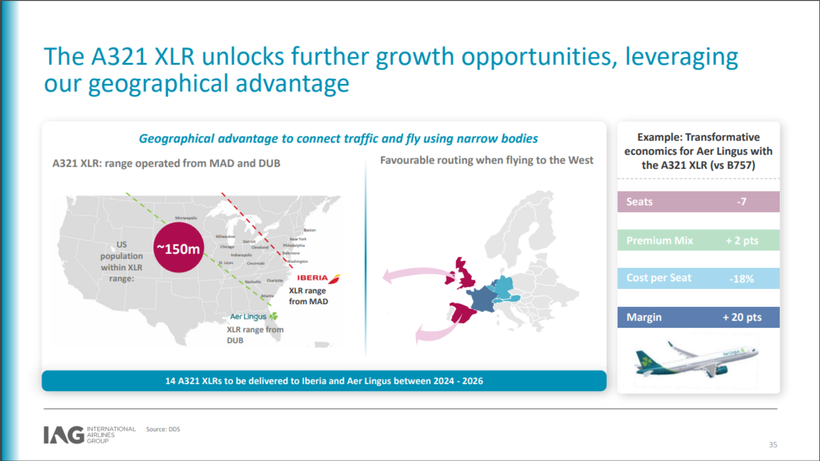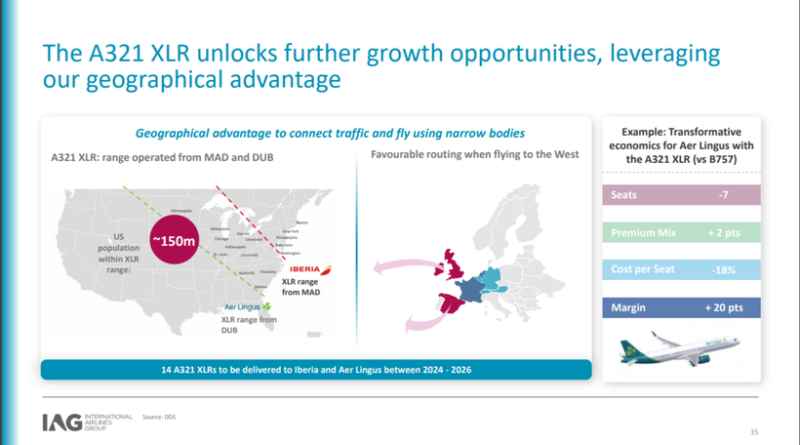Is the A321XLR’s Range Worse Than the A321neo!?
Many have been eagerly awaiting the Airbus A321XLR to rewrite the rules of trans-Atlantic flying. Crossing the Atlantic requires a longer range; in the good ol’ days, this typically meant using a widebody aircraft like the Boeing 777 or Airbus A330. This meant trans-Atlantic flights between North America and Europe have traditionally been confined to hub airports in major markets like Chicago (ORD) or Dallas-Fort Worth (DFW). The XLR promised to change that, ushering in a new era of point-to-point flying and enabling mid-sized US markets to see nonstop flights to Europe. It would also lower the barrier to entry, allowing low-cost carriers to compete on routes that have been the exclusive domain of legacy carriers like United or British Airways, lowering fares across the board via competitive pressure.
Well, IAG may have just thrown cold water on that dream. According to Enilria’s report, IAG, parent to airlines like British Airways and Aer Lingus, believes that the A321XLR’s range isn’t as quite as “Xtra Long” as we once imagined. For instance, the Dublin (DUB) to St. Louis (STL) route is deemed to be right on the edge of the A321XLR’s capabilities in their configuration. That puts the range at approximately ~3,925 miles, a far cry from the lofty 4,700-mile talks circulating before. And to make matters worse, these Iberia and Aer Lingus planes won’t even have a super-dense configuration, meaning a low-cost carrier with more seats might be scraping the bottom at around 3,500 miles. Not exactly what we had in mind.
A leaked PowerPoint slide from IAG adds some visual context to this revelation. Two color-coded lines supposedly represent the A321XLR range for Aer Lingus and Iberia, originating from DUB and MAD respectively. The range from DUB stretches along a line roughly from Atlanta to St. Louis, while the range from MAD falls considerably shorter, going from approximately Washington DC to just north of Detroit (remember that while Mercator projection makes Madrid appear closer, Dublin is actually one of the closest European capitals to most points in the US).

Let’s put this into perspective. If DUB-STL is indeed the limit, then the longest A321XLR flight would clock in at 3921 miles. Coincidentally, the current longest 737 MAX 8 flight is from Kuala Lumpur to Melbourne, operated by Batik Air Malaysia, covers 3918 miles — just 3 miles shorter than the A321XLR’s theoretical maximum. That’s like… my drive to Target or Costco.
Here’s the irony for you: the A321XLR, supposedly the “Xtra Long Range” variant, might end up with a range worse than its lesser sibling, the A321neo. The longest A321neo flight, such as SAS’s Copenhagen (CPH) to Washington Dulles (IAD) at 4074 miles, leaves the XLR lagging behind. Maybe “Xtra Large Remuneration” is what Airbus actually meant by “XLR,” since that’s what they’ll be getting from their customers?
This revelation is no small matter. It severely caps the area that the XLRs can serve for trans-Atlantic flying, confining them predominantly to the northeast US and northwest Europe – you know, the kinds of routes already served by the A321neo. Airports like DUB or KEF, closer to the US on the “great circle,” might still be in the game for reaching parts of the Midwest, but the broader dreams of expansive point-to-point trans-Atlantic routes, especially favored by carriers like Aer Lingus, now face limitations.
This is quite embarrassing for Airbus. The A321XLR was supposed to be a game-changer, and now we’re left wondering if it has much marginal utility at all compared to the Neo and the MAX. We’ll see how things look in practice once the XLR enters service.

